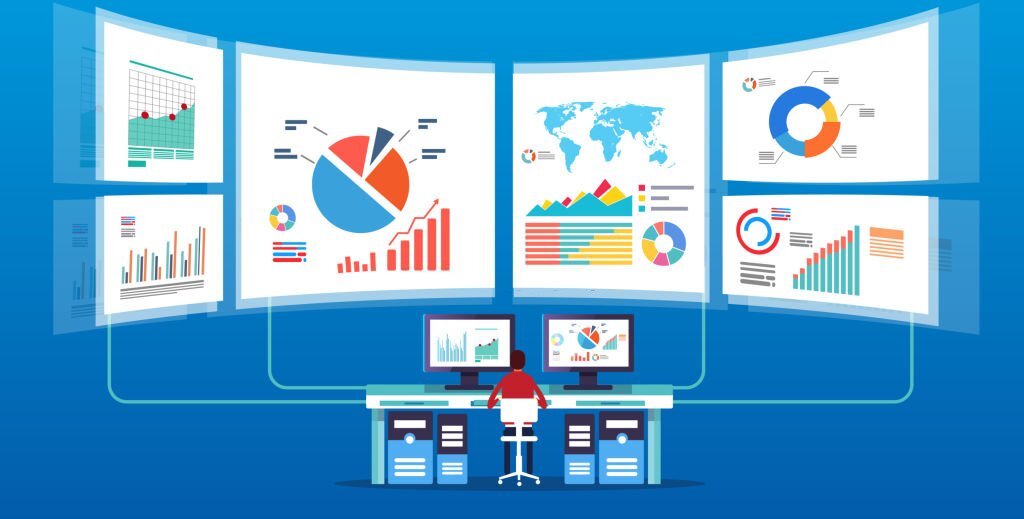In the dynamic world of digital marketing, managing a wide array of digital assets has become more crucial than ever. As brands navigate the complexities of Omni channel strategies, the role of Digital Asset Management (DAM) systems emerges as a game-changer. These systems are not just tools for storage; they are pivotal in orchestrating a cohesive marketing narrative across various platforms.
The essence of a digital asset management system lies in its ability to centralize and streamline the handling of digital assets like images, videos, and documents. This centralization is vital in today’s marketing, where consistency across channels is key. With consumers interacting with brands through multiple touchpoints, maintaining a unified brand voice and visual identity becomes a significant challenge. DAM systems address this by providing a single source of truth for all digital assets, ensuring that every marketing piece, whether on social media or in an email campaign, reflects the brand accurately.
Exploring the Challenges in Managing Digital Content Across Multiple Platforms
As brands expand their digital presence, they face a myriad of challenges in content management. The diversity of content formats, from high-resolution images to interactive videos, requires a robust system to handle variations efficiently. An additional degree of complexity is added by the necessity to accommodate various linguistic and cultural characteristics.
Making sure that the correct content gets to the right audience through the right channel is one of the main issues. The more marketing outlets there are, the more challenging this process gets. Brands must not only create high-quality content but also tailor it for different platforms, all while maintaining a consistent brand message.
This is where DAM systems play a critical role. They enable marketers to organize and distribute content more effectively, ensuring that each piece of content is optimized for its intended platform and audience.
While we focus on marketing, it’s worth noting that DAM systems have versatile applications in various sectors, such as in hospital asset management, where they help manage and distribute critical digital assets efficiently.
The Vital Role of Content Approval Workflows in Enhancing Brand Consistency and Trust
A well-structured content approval workflow brings several benefits. Firstly, it enhances brand consistency. By having a clear process for reviewing and approving content, brands can avoid discrepancies in their messaging and visual representation. Maintaining this consistency is essential to creating a powerful brand identity that appeals to the target market.
Second, trust-building is greatly aid by these workflows. Strict screening procedures reduce the possibility of mistakes or misrepresentations in content, which may be detrimental to a brand’s reputation. Customers are more likely to trust a brand that consistently presents high-quality, accurate, and relevant content.
Moreover, content approval workflows aid in faster decision-making and efficiency. By clearly defining who is responsible for reviewing and approving content, these workflows eliminate bottlenecks and streamline the content creation process. This efficiency not only saves time but also ensures that marketing campaigns are launch promptly, keeping the brand relevant and competitive.
Similarly, in sectors like healthcare asset management, content approval workflows are essential to ensure the accuracy and compliance of information, reflecting the high standards of trust and reliability expected in healthcare services.
How a DAM System Addresses the Bottlenecks in Digital Content Management and Distribution?
In today’s digital landscape, managing and distributing content efficiently stands as a significant challenge for many organizations. A Digital Asset Management (DAM) system steps in as a powerful solution, effectively addressing these bottlenecks. It transforms the way organizations handle their digital assets, from images and videos to documents and beyond.
Streamlining Asset Management
A DAM system simplifies the management of digital assets. It provides a centralized repository where all digital content is stored, making it easily accessible to authorized users. This centralization eliminates the chaos of scattered files across various drives and platforms, ensuring a more organized and efficient workflow.
Enhancing Distribution Efficiency
Distribution of content across multiple channels is another area where DAM systems shine. They facilitate smooth integration across several platforms, guaranteeing that the appropriate material reaches the intended audience at the optimal moment. Time is saved, and consistency across all channels is guaranteed thanks to this integration, which is essential for preserving brand identity.
Strategies for Efficient Content Planning and Task Management with DAM
Efficient content planning and task management are vital for any organization’s success. DAM systems offer tools and features that streamline these processes.
Content Planning Tools
Digital asset management system provides tools that help in planning content strategy effectively. They allow teams to map out what content is needed when it is needed, and how it should be used. This planning ensures that content creation aligns with the overall marketing strategy and business goals.
Task Management Features
Task management is made easier with DAM. It assigns roles and responsibilities, tracks progress, and sets deadlines. This clarity in task management boosts productivity and ensures that everyone is on the same page.
Streamlining Review and Feedback Processes in Content Creation and Distribution
The review and feedback process is crucial in content creation. DAM systems streamline this process, making it more efficient and less time-consuming.
Simplifying Content Review
DAM systems allow for easy sharing of content with stakeholders for review. They can provide feedback directly within the system, which speeds up the review process and reduces the chances of miscommunication.
Efficient Feedback Mechanism
Feedback mechanisms in DAM systems are design to be straightforward and effective. They allow for quick revisions and updates, ensuring that the final content is of the highest quality and meets the required standards.
In specific sectors, such as hospital asset management, the efficiency of DAM systems becomes even more pronounced. Hospitals deal with a vast array of digital assets, from patient records to medical imagery. A DAM system can significantly streamline the review and feedback processes for these sensitive assets, ensuring accuracy and compliance with healthcare regulations.
Ensuring Effective Content Version Control and Compliance Management through DAM
Maintaining control over content versions and ensuring compliance are critical aspects of content management. DAM systems offer robust solutions for these challenges.
Content Version Control
DAM systems keep track of all versions of a digital asset. This tracking makes it easy to revert to previous versions if needed and ensures that the most current version is always used. It also provides a clear history of changes, which is essential for auditing purposes.
Compliance Management
Compliance management is streamlined with DAM. The system can be set up to ensure that all content meets the necessary standards and regulations. It can flag assets for additional reviews and track the expiration of assets, ensuring that all content is compliant and up to date.
In the realm of healthcare asset management, the role of DAM systems extends to ensuring strict compliance with healthcare standards and regulations. Managing digital assets in healthcare involves adhering to stringent privacy laws and operational protocols. A DAM system not only simplifies this compliance management but also enhances the overall efficiency and security of managing healthcare-related digital assets.
Read More – CMMS Software with CAFM System
Leveraging Automation for Maximising Asset Findability and Reusability in DAM
In the realm of digital asset management systems, automation stands as a pivotal tool. It transforms the way we handle vast volumes of digital assets. By automating tasks like tagging and categorizing, DAM systems significantly enhance the findability of assets. This is crucial in a landscape where time is of the essence, and the rapid retrieval of the right asset can make a substantial difference.
Key Benefits of Automation in DAM
- Efficient Organization: Automation sorts and tags assets, making them easy to locate and use. This streamlined organization saves valuable time.
- Enhanced Reusability: With assets neatly organized and easily searchable, reusing and repurposing content becomes a breeze. This not only saves resources but also ensures consistency across various channels.
Strategies for Implementing Automation in DAM
- Automated Tagging: Implement AI-driven tagging to categorize assets based on content, making them easily searchable.
- Workflow Automation: Set up automated workflows to ensure smooth transitions between different stages of asset management.
Optimizing Omni Channel Customer Experiences through Streamlined DAM Workflows
A well-implemented DAM system is a game-changer for Omni channel experiences. It ensures that the right content is delivered at the right time, across various channels. This consistency is key to maintaining a strong brand presence and delivering a seamless customer experience.
Enhancing Customer Engagement with DAM:
- Consistent Brand Messaging: By managing assets centrally, DAM ensures uniformity in brand messaging across all channels.
- Personalized Experiences: DAM can help tailor content for different audiences, enhancing the overall customer experience.
While discussing Omni channel experiences, it’s worth noting how DAM systems are not just limit to traditional marketing realms. In sectors like hospital asset management, DAM plays a crucial role in ensuring that medical professionals have timely access to essential digital resources, ranging from patient records to critical medical imagery.
Future Trends in DAM: Anticipating Changes and Preparing for Next-Generation Digital Asset Management
The future of DAM is shape by emerging technologies and evolving market needs. Staying ahead means being adaptable and ready to embrace new trends.
- AI and Machine Learning: These technologies are set to revolutionize how DAM systems categorize and manage assets.
- Cloud-Based Solutions: The shift towards cloud-based DAM offers flexibility and scalability, catering to the growing demand for remote access.
As we explore future trends in DAM, one significant area of growth is in healthcare asset management. Here, the integration of AI and machine learning within DAM systems is poise to revolutionize how healthcare providers manage and access vital digital assets, enhancing patient care and operational efficiency.
Expert Tips for Implementing a DAM System Effectively in Your Organization
Implementing a digital asset management system can be a significant step for any organization. It’s crucial to do it right to reap the maximum benefits.
Tips for Successful DAM Implementation:
- Understand Your Needs: Assess what your organization specifically needs from a DAM system.
- Choose the Right Platform: Select a DAM platform that aligns with your organizational goals and workflow requirements.
- Train Your Team: Ensure your team is well-train to use the DAM system effectively.
- Regularly Update: Keep your DAM system updated to leverage the latest features and security measures.




